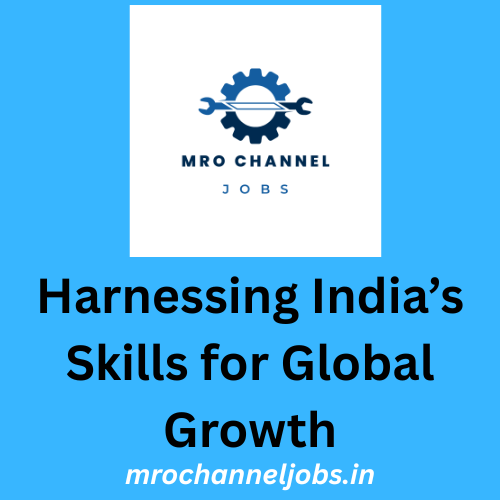A Talent That Adapts and Excels
Indian professionals—whether at home or abroad—have consistently demonstrated their ability to learn rapidly and adapt to diverse job roles. Driven by intellectual curiosity and a relentless work ethic, they continue to excel in every industry they enter.
This talent pool has earned global recognition, particularly in engineering. India’s skilled workforce is increasingly sought after by multinational corporations, reflecting excellence across sectors. The service industry, too, thrives on human capital—both from elite institutions and numerous regional centers—that’s continually nurtured through training, bridging any industry-readiness gaps with finishing-school or induction-style programs.
Building Global Capability: India as a Hub
India’s quintessential human resource strength is fueling the growth of Global Capability Centers (GCCs)—offshore centers of multinational corporations that handle IT, R&D, finance, analytics, AI, and more. Currently, India hosts nearly 1,700 GCCs, accounting for over 50% of the world’s total . The market value of these operations is set to rise from about $64.6 billion in FY 2024 to $99–105 billion by 2030 . Businesses such as McDonald’s, Tesco, and others are tapping into this innovation powerhouse, with R&D comprising nearly 55% of GCC revenue as of 2023 .
Harnessing Skills through Apprenticeship and MRO
In highly specialized domains—like maintenance, repair, and overhaul (MRO) across land, marine, airborne, and industrial systems—skills must pass seamlessly from one generation to the next. Apprenticeship models and structured knowledge transfer are crucial to sustain high standards and precision.
Accordingly, an equal focus must be placed not just on preparing talent for companies, but also on ensuring that those already working receive effective, structured mentorship and training. This ensures continuity of expertise and long-term industry resilience.
Elevating MSMEs: Clusters, Standards, and Exports
For India’s small and medium enterprises (MSMEs), the challenge is to break into global markets with high-quality manufactured goods. One strategic approach is to develop homegrown “Global Capability Centers”—clusters of MSMEs supported by government facilitation (in communication, standards, inspections) that can collectively meet the demands of multinational clients.
- Exports from MSMEs have surged from ₨ 3.95 lakh crore in 2020–21 to ₨ 12.39 lakh crore in 2024–25, with exporting MSMEs increasing from 52,849 to 173,350 in the same period. These now account for over 45% of India’s exports .
- MSMEs contribute significantly to job creation; over 16 crore jobs are generated by micro industries alone, yet around 1 crore are at risk of closure due to policy mismatches and structural neglect .
Supporting MSMEs through clusters, access to certified labs and inspection services, language and communication training, and streamlined government backing can solidify their role in India’s global industrial ecosystem.
Aviation MRO: Ready for Take-Off
Focusing on the aviation segment:
- The Indian aircraft MRO industry is projected to grow by 50%, reaching ₹4,500 crore by FY 2026, driven by fleet expansion and a reduction in GST on components .
- Currently, Indian MRO players—providing line checks, air-frame checks, and redelivery checks—account for just 14% of the MRO spend by Indian carriers, with the rest outsourced overseas. But this is expected to climb to 20% soon .
- With improvements in infrastructure, workforce training, and supply chains, profitability is expected to rise to around 20%, and financial metrics such as the interest coverage ratio are set to strengthen significantly .
- Moreover, global market data estimates India’s overall aircraft MRO industry could grow from USD 3,037 million in 2023 to USD 6,887 million by 2030—a CAGR of around 12.4% .
Conclusion: A Strategic Call to Action
India is uniquely positioned to leverage its vast, adaptable workforce and rising industrial capabilities to:
- Strengthen GCCs and innovation hubs, expanding India’s global footprint in AI, R&D, finance, and operations.
- Empower MSMEs through clusters and infrastructure, enabling them to produce, inspect, certify, and export high-quality goods at scale.
- Expand MRO capacity with skilled apprenticeships, modern facilities, and regulatory support to fulfill global demand.
With these pillars in place—talent, innovation hubs, MSME clusters, and MRO infrastructure—India can accelerate its transformation from a service destination to a global center of excellence in manufacturing, maintenance, and innovation.



